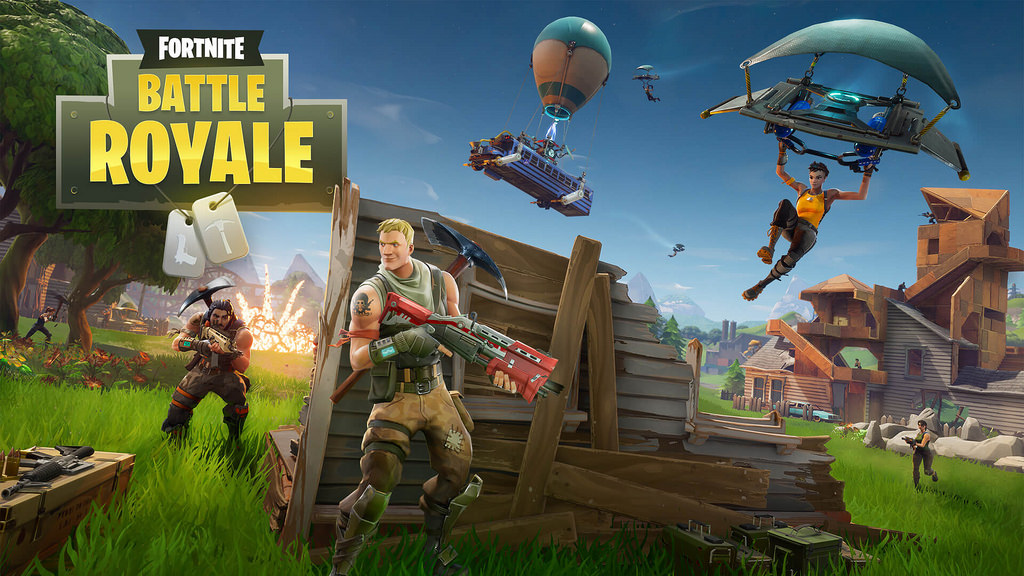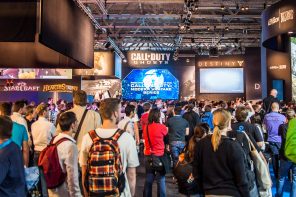In the summer of 2018, developers from Electronic Arts and DICE, released the trailer for their most anticipated new game of the year — Battlefield V. Since 2002, the Battlefield franchise has been a staple for gamers, amassing over 66 million copies sold across seven games. And yet, despite the title’s enduring success, there is a unique buzz surrounding its newest launch. Battlefield V is highlighted by the inception of Firestorm, Battlefield’s take on the exponentially rising trend of the battle royale game mode, in which players compete individually, or in groups, to eliminate all other players within a constrained space. The mode gained traction with the release of Player Unknown’s Battlegrounds (PUBG) in March 2017, and was further popularized that same July with the release of Epic’s hit game Fortnite.
Fortnite’s cartoon-like gameplay, colourful backgrounds and references to pop culture powered its rapid ascent to mainstream sensation; Drake and Travis Scott streamed themselves playing with streamer Ninja, while French soccer star Antoine Griezmann celebrated his goal in the World Cup final with a dance present in the game.
While Fortnite’s swift market penetration was due to a plethora of factors, much of the game’s success is predicated on its unique and innovative business model. Fortnite has sustained a free-to-play platform, monetizing entirely through in-game transactions that allow players to customize their characters with “skins” (outfits), celebrations, and more. Although this may sound like little more than a gimmick, Fortnite skins have become a signifier of a player’s status and a startlingly effective tool for revenue generation. Nearly 70 percent of Fornite’s 78.3 million monthly players have payed fro in-game purchases, spending an average of $84.67. As a result of this extensive spending, Fornite is on track to generate $2 billion in 2018, skyrocketing the value of Epic Games, Fortnite’s developer, to $8.5 billion.
Nearly 70 percent of Fornite’s 78.3 million monthly players have payed for in-game purchases, spending an average of $84.67.
At its core, the meteoric rise of battle royale games has been driven by their ability to retain players, and have them come back for more. One way they are able to achieve this “stickiness” is through the nature of the game mode itself; since the game is designed to be decided by a few bullets, it gives the impression that losses are unlucky, leaving the player feeling as if they were only one shot away from winning. Additionally, the randomness of gameplay, from changes in drop zones to the opening of loot chests, has a effect similar to that of slot machines or poker hands – constantly rejuvenating the interest of users. Like a well-written cliff-hanger, this phenomenon, referred to by psychologists as variable-ratio schedule continues to pique the interest of the player, bringing them back to the game time-and-again.
The lucrative psychology of battle royale and the ensuing success of PUBG and Fortnite continues to have a significant impact on the gaming industry. As players join by the masses, video game developers have taken advantage of the burgeoning genre to implement new strategies and revolutionize the video gaming landscape. After years of isolation, console manufacturers have finally introduce cross-console play, starting with the ability to play Fortnite alongside users on a different gaming system. Although this change may appear insignificant, major console manufacturers such as Microsoft and Sony have a reputation for locking in their customers through safeguarded features and exclusive games. The advent of cross-console play marks a pivotal change in their business models, and a watershed moment in the industry
In an ever-changing landscape, developers and manufacturers are fiercely competing to ride the wave of battle royale. The value of the games within the genre has exploded from $1.7 billion in 2017 to a projected $20 billion in 2019. Hours streamed for battle royale games has risen from one million hours in mid 2017 to over 700 million hours this year, dwarfing the second most streamed genre, multiplayer online battle arena (MOBA) games. It is left to be seen if EA will find success with Battlefield’s foray into battle royale, but the storm is closing in and they’d rather look out from the safe zone than look in from outside.







